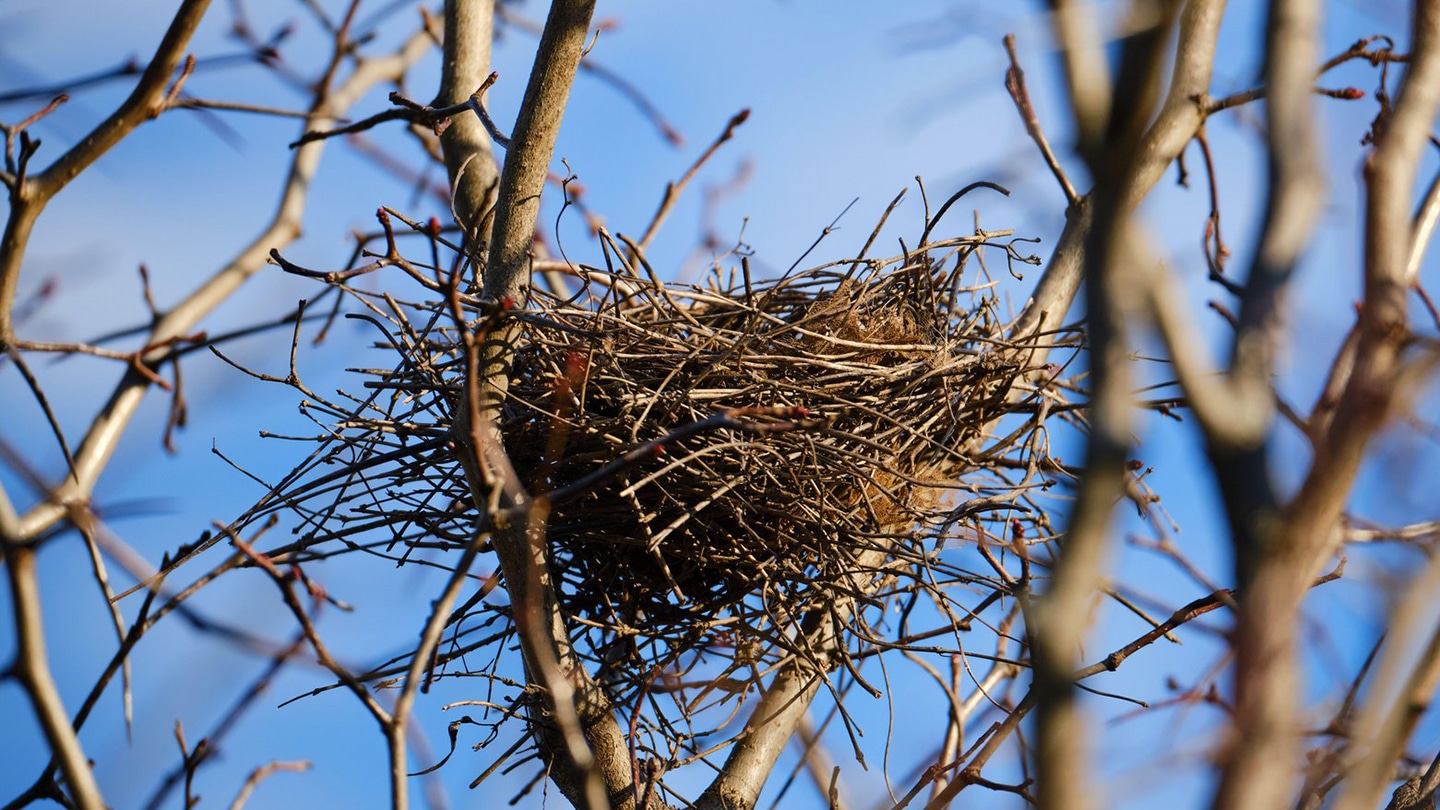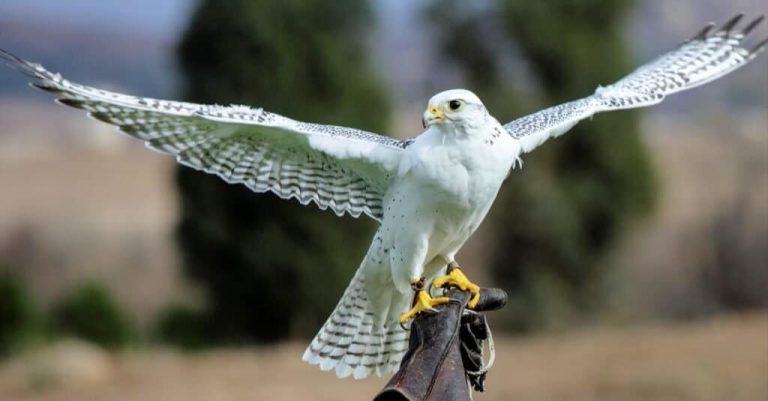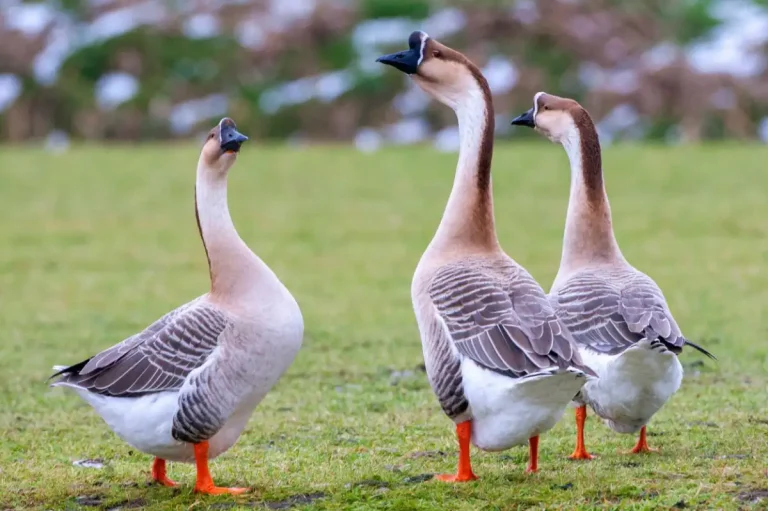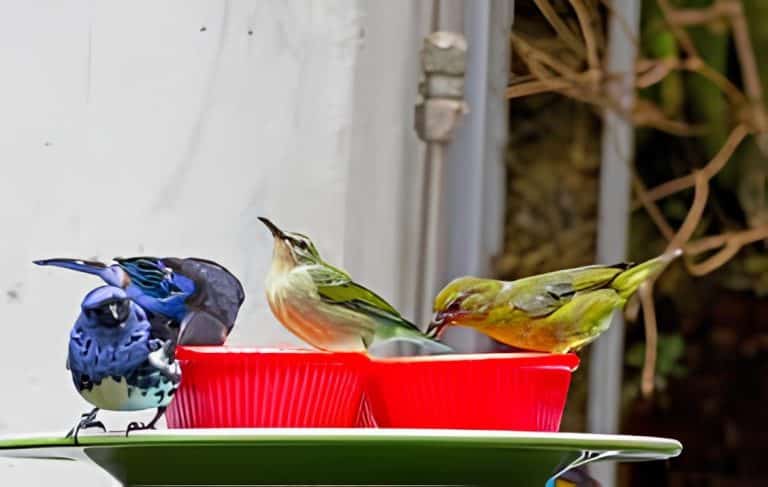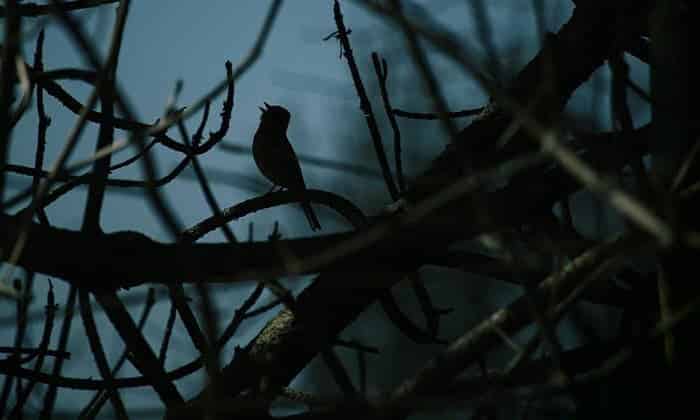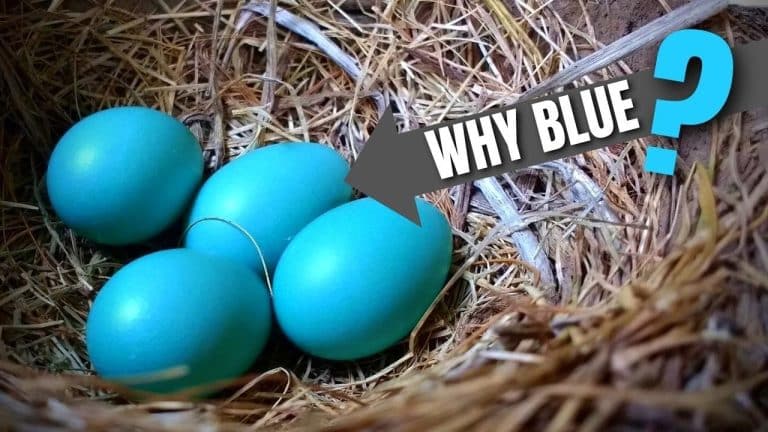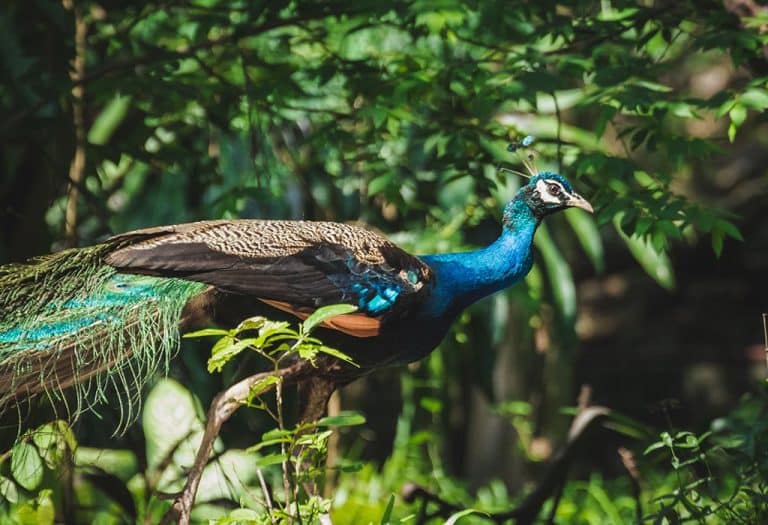Bird Nesting: Everything About How Birds Build Thier Nests
Nests are not just homes for birds or nurturing hubs for the young birds but an art of delicacy and perfection. If you love watching birds, you might have observed birds making up nests.
Because nests are mainly associated with mating and protection of the birds, it is often assumed both male and female partners work together to build a home for their young kids.
It may be true for some species, but not both parents from each bird species share the same responsibility. Similarly, there is so much to know about bird nests.
In this blog, let us look closer at how birds build their nests, how parents share their responsibilities, and how important a nest is for a baby bird!
Nest-Building: How Do Birds Build Their Nests?
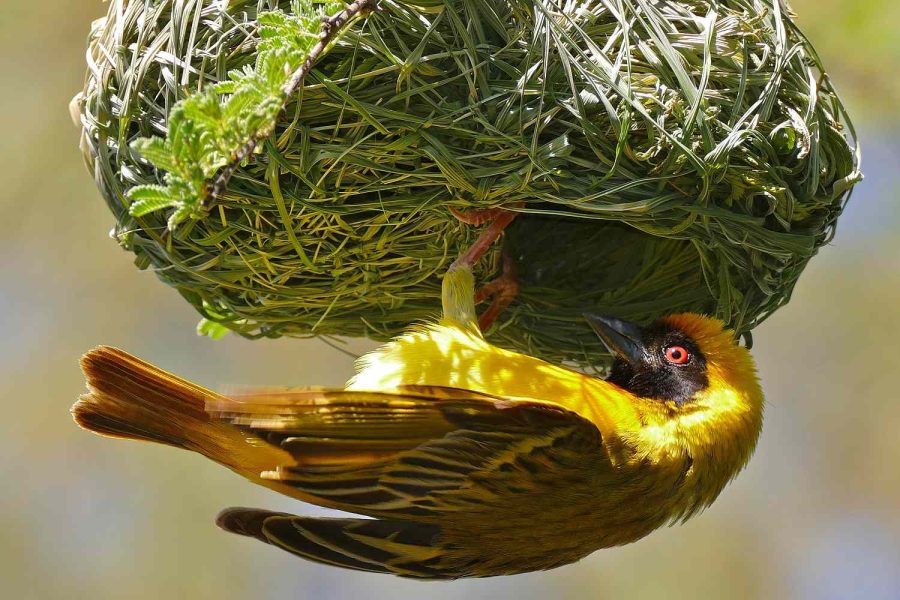
To start the nest-building process, the birds choose a tree of their choice and preference. After this, the birds build the nest by placing twigs and sticks on the tree. As the birds drop sticks and twigs on the tree, a few start getting lodged in the tree branch, the nest’s foundation for birds.
It is just an outline the birds are building for their nest. Once an outline is built, with the help of beaks, birds carefully start weaving their nest together with the chosen material. The material can be fibers. Weaving helps the nests to get stability and strength while allowing them to hold materials in the nest.
One interesting thing to note is that the birds can also tie knots as they weave. Building a nest is no easy job and can take long. A few birds also use materials like a spider’s web or mud to strengthen their nests. At the same time, some birds also use their saliva for this purpose.
The birds can build their nest in different places like a tree branch, tree hollows (parrots), side of earth banks (spotted pardalote), etc. The birds are really intelligent when it comes to building nests. They can build different types of nests depending on what bird species it is. The major types of bird nests include a nest cup and adherent nests. A lot of birds occupy the nests of other birds.
Where Do Birds Build Their Nests?
You can locate a bird’s nest anywhere. Depending on what species a bird belongs to, there will be a specific location of its nest. The location, height, and time of building nests are different for different species of birds.
Some birds use trees and their branches to lay their nests. For nests on trees, the height and the tree part used for nest building will also vary. When birds choose trees to build nests, they can be tall, dense, or shrubs. Trees for nest building are also specific for different bird species.
For example, the nests of Scarlet Tanager are usually found in the oak trees, while Baltimore orioles use elms to build their nests. A bird called Curved-billed Thrashers builds their nest in the spiny arms of a specific cactus species (Cholla Cactus).
Some birds even build their nests on the ground like ovenbirds. Many birds also use man-made materials like air conditioning boxes to build their nest.
Do Male Birds Contribute to Nest Building?
In most bird species, the female birds are more responsible for building the nest. The primary responsibilities of nest building include choosing the location of nests, collecting the materials, and defining the interiors of the nest. How male and female birds share the responsibility of nest building is variable in different bird species.
Let us briefly see how females are responsible for nest building for the young ones:
For building the nest, the females will first find the right spot for building a nest. The place for building a nest will consider all important aspects of a safe environment for the baby birds. Safety, accessibility, and availability of food sources are the most important factors when choosing the right place to build a nest.
Once the female parents choose the right place for building the nest, the next step is to collect materials for building the nest. Like finding the right place, female birds are known to take responsibility as well. The female birds then start collecting the materials required for building the nest. The materials include twigs, leaves, grasses, and adhesive materials.
While collecting materials for building nests is a very time-consuming and tiring task, female birds are seen to forage tirelessly to collect all the materials necessary. The female birds then provide a shape and stabilize the nests using their beaks. Some birds also add feathers or fur-like materials to make it more comfortable for the baby birds.
Nest Building: Role of Male Birds
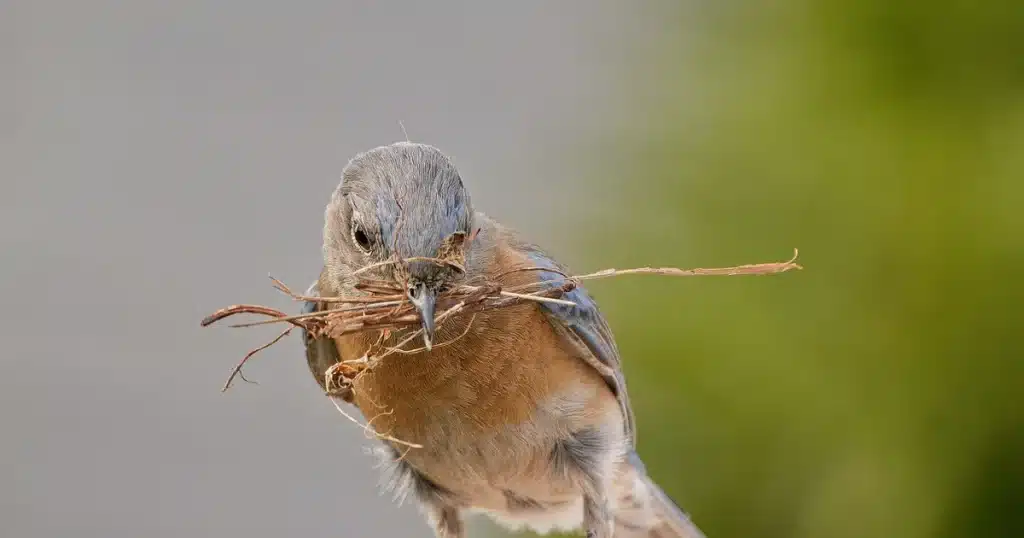
While female birds are known to do most of nest building, male birds are seen to be an important part as well. It depends on different species and how males contribute to nest building. The responsibilities of male birds can be minimal, higher involvement, or even no participation. Ecological history, mating methods, and evolution are a few factors that rule out male participation.
In some species, the role of male partners is essentially limited to mating. In contrast, male partners of some species have their share of responsibility in nest building. Surprisingly, there are certain species where the male partners dominate nest building.
Northern Cardinal birds make a collaborative effort in building their nests. Both male and female parents often collect and bring the materials for building the nests. Here, the male partner helps arrange and weave the materials together. In some species, like weaverbirds, hummingbirds, woodpeckers, and orioles, the nest building is male-dominated.
A thing to be noted here is that it is very rare that the male birds alone will build nests. As nests are closely associated with the laying of eggs and incubation, the females are primarily involved in it. Mostly, the male birds are responsible for arranging the collected materials and providing the finishing touches to the nests.
When Do Birds Build Nests?
The nesting period of birds mostly coincides with the spring season arrives. The answer to when birds build nests will vary with different species—for example, wood pigeon nests throughout the year rather than during the spring like other birds. The nesting period of birds is also greatly affected by global climate change. For instance, there is a shift in the start of the nesting period of birds (30 days earlier) as compared to the nesting period in the 1960s.
Spring often coincides with nesting season, but as we mentioned, differences will be based on different species. Some of the bird species are early nesters. Some examples of early nesters are owls, pigeons, and blackbirds. In contrast, bird species, seed eaters, and summer migrants nest relatively later than other birds.
Nest-building for birds is needed to provide safety to the bird eggs and baby birds. Nest building is related to the breeding season of birds. This means the breeding season of different species will determine when the birds will start to build their nests.
Hatching of Birds Eggs: How Long Does It Take?
Unlike humans (who give birth directly to newborns), birds lay eggs after mating. The eggs are then incubated mostly by mother birds, and after a specific period, the eggs are hatched. This whole process is termed incubation. In simple terms, the incubation period is how long it takes for bird eggs to hatch.
The time it takes for bird eggs to hatch will vary with different species. Apart from the species of birds, how long egg hatching takes depends on environmental conditions like ideal temperature and humidity. Predators are also an important factor when we talk about bird egg hatching.
To start the hatching of bird eggs, the female bird first has to lay eggs. The hatching will also depend on the incubation aided by the mother bird.
For example, some birds lay their first egg and then incubate it immediately; the hatching of eggs will be in a sequence then. If the mother bird lays all eggs simultaneously and then incubates, all the eggs will be hatched almost simultaneously.
- For a bird’s egg to hatch, it can take 11 days to 3 months. Typically, the eggs of smaller birds take a shorter time for the bird eggs to hatch. Note that smaller birds don’t always need a shorter period for their eggs to hatch.
- Hummingbird eggs take around 14 days to hatch, whereas for chicken, it is 21 days, and for a turkey and duck, it is 28 days—bigger birds like Ostrich, Rheas, Emus, and Cassowaries. Kiwis lay the biggest eggs, which can take up to 75 to 90 days to hatch them.
- The ideal time for hatching bird eggs is based on the survival of the offspring. For example, bird species that lay eggs on the ground must not take long to hatch eggs.
Now let us know more about how long birds stay in the nest in the following part!
Baby Birds in Nests: How Long Do Birds Stay in the Nest?
Again, to say how much time it takes for baby birds to leave the nest will be specific to the bird species. On average, a baby bird will stay and grow in the nests for 2 to 6 weeks.
For smaller-sized bird species, the baby birds take less time to leave the nest, but there are a few exceptions. Raperts, a small bird species, can spend up to 8 to 10 weeks in their nest.
Baby birds born with feathers will take less time to leave the nest. Plovers and baby ducks are among the different bird species, and baby birds have feathers as they are born. Baby birds from bird species like turkeys, quail, killdeer, or sandpipers will start to get up and run around as soon as they hatch from their eggs.
How soon a baby leaves its nest will depend on how fast it grows. But some external factors will also dominate here. Weather conditions, food availability, and predators will also impact the period for the staying of baby birds in the nests.
Baby Birds Learning to Fly
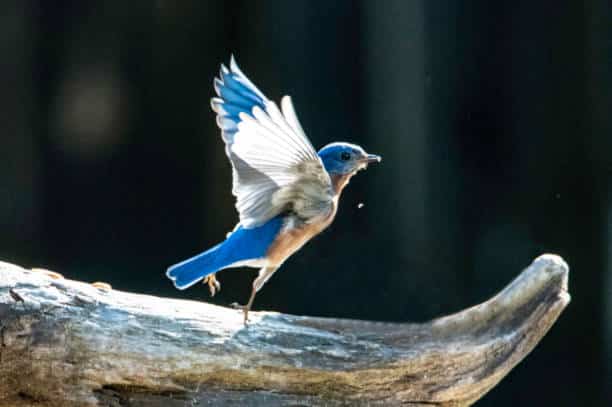
As the eggs are hatched, the baby birds depend solely on their parents for food and protection. There is a variation of how long it will take for a baby bird to fly, depending on the bird species.
On average, it can take anywhere between 3 days to 10 weeks for a baby bird to start flying. To be more specific, the average time for birds is 19 days, with a typical range of 12 to 21 days. Usually, the newborn birds start by mastering flying, and the initial attempts made by the newborns can be imperfect and clumsy.
As the baby birds hatch from their eggs, most of the time, they will not have feathers, and they are too weak for anything. Some of the species may be born with feathers that help them to fly early. The initial days are dedicated to attaining strength, with required feeding and muscle strengthening.
After they grow, the young birds reach the stage of fledging, where they learn to fly. Usually, the parents guide the newborns until they have mastered their flights. When the newborns are near maturity, their plumage and features will all be developed, and they are still learning the perfection of the skills needed to survive.
Using Nests from Other Birds: Brood Parasitism
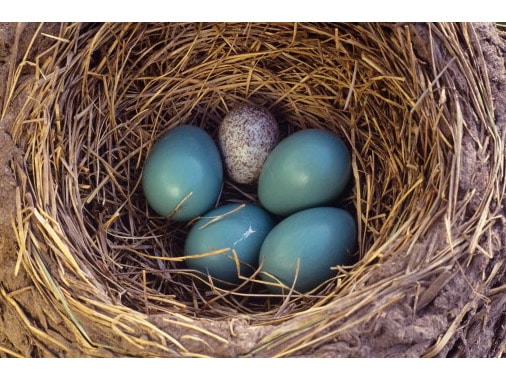
All young birds need care, and to protect their newborns, the mother birds can go to any limits. To ensure the survival of their newborns, mother birds find ways for the baby birds to grow safely. Brood parasitism or nest parasitism is commonly observed in a few bird species.
In this practice, a mother bird will lay her eggs in the nest belonging to another bird. It is a strategic way the parasitic birds ensure other birds help the survival and growth of their babies. In simpler terms, a mother bird will find a nest that belongs to birds from different species and lay the egg there. Sometimes, the intruder bird might also destroy the nest just so that the mother bird takes the egg of the intruder bird as she shifts her eggs into the new nest.
Typically, the intruder bird will lay a single egg in the nest of a different mother bird. This ensures a greater chance of survival for the newborn. Brood parasitism is a great concept as it saves the intruder mother from the troubles of building a nest, incubation, protection, and providing food to the newborns.
Brood parasitism is a successful phenomenon, and the adaptations of intruder birds have made it easier.
- In species that practice brood parasitism, there is a similarity in the eggs of both bird species, including the size and color of the eggs.
- With a shared mimicry with the eggs of the mother bird, the offspring, too, are similar. For example, the parasitic offspring might have the same plumage as the original bird babies.
- In addition, the parasite eggs have a comparatively thicker eggshell that renders protection in case of accidents or intended damage.
- Another adaptation that ensures the survival of parasitic eggs in the mother’s nest is a shorter incubation period. The eggs, once hatched early, can grow faster than other offspring. Sometimes, the parasitic newborns (hatched and grown before the host’s eggs) destroy the eggs of growing newborns to survive.
Even the host species have adapted to defend themselves from the intruder eggs.
Hiding nests (by making the nests harder to access) and defending nests (by staying off the nest as little as possible) are two strategies the host mother birds follow. With this, egg expulsion is a common practice if the host birds can identify the intruder eggs.
Some of the birds that lay eggs in other bird’s nests are listed below:
- Brown-headed cowbirds
- Indigobird
- Striped cuckoos
- Greater honeyguides
- Black-headed duck
- Common goldeneyes
- Shiny cowbird
- Common Cuckoo
- Cuckoo-finch
Interesting Facts About Birds You Can Not Miss
Now that we have learned everything about birds building their nests let us learn a few interesting facts that will intrigue you to learn more about birds!
- Some species of birds, like Bald Eagle, build nests that they can use up to a few years. The birds provide improvement to the nests that help the nest to remain intact. Nests of bald eagles are among one of the largest bird nests.
- Pigeons can nest about eight times annually! Finally, we know why we see pigeons so often!
- A few bird species use nests that other animals have abandoned. One such bird to do this is the Burrowing Owls.
- The young ones of one of the bird species, Killdeer, leave the nest about five minutes after hatching. This is because the young ones are fully feathered as they hatch.
- A bird species, Gyrfalcons, uses nests for many generations, and their nests are usually old, belonging to the previous generations. You will be shocked to know that a nest, almost 2500 years old, was found.
- It is assumed that young birds don’t stay in their nests for long, which is true for many bird species. But birds like hawks, eagles, and owls usually stay in the nests longer. For example, babies of bald eagles can stay in the nest for about 98 days.
- Bird nests are mainly used for breeding, but some birds use them for other reasons, like roosting.
Summing It Up
As we learn more about how birds build their nest, it impresses us to learn what all these little creatures can do. Choosing a tree, outlining, picking up materials, and finally making a nest with intricate details and so much strength, the birds do it tirelessly.
How long do birds stay in the nest? This will vary from species to species. In addition, birds are very specific about the responsibilities shared among parent birds for building nests. In some species, you will see either parent dominantly taking the responsibilities, whereas, in others, the responsibilities are shared!
Let us know one interesting fact you know about birds and their nesting by leaving a comment below!

